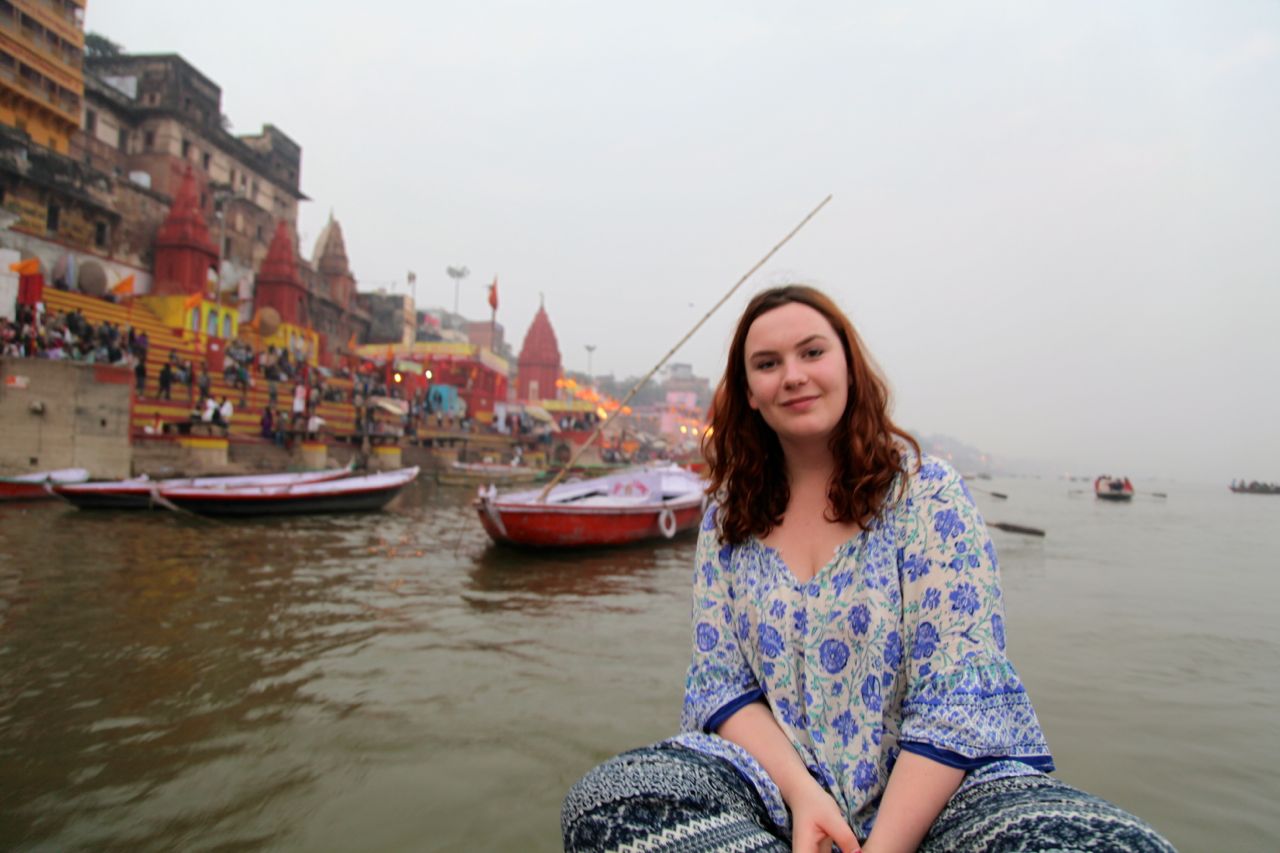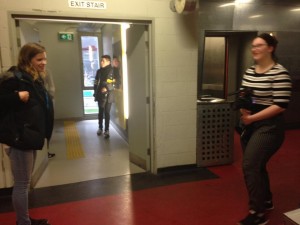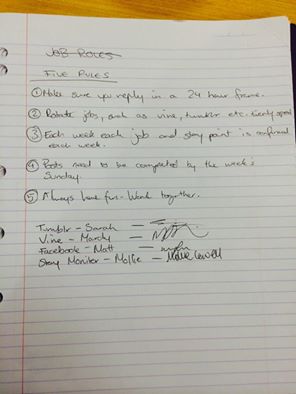I apparently had a flat out week the first week and didn’t get the Analysis done, therefore I do not have a written account of what I would like to get out of Film/TV 2 this semester. However, I do recall having a pretty shit time last semester and not managing to get a short film screened. I felt that while this experience taught me some valuable things (detailed here) I missed out on some technical elements of creating a drama.
I have to admit that I wasn’t keen on this semester’s group’s idea at first. Mainly because I knew I was going to have a tough semester out of uni and wanted to do something that was less work, which is what I developed my original idea of creating a poetic documentary about the people of Melbourne around.
Being bunched into the group of people that really had no one else to group with was the best thing that happened to me this semester. We created two short dramas, so I feel like I caught up on the practice that I missed last semester. And most importantly I learned that a good group can take anything and make it work.
I learned to voice my opinions, kindly and critically, whilst having an open mind. I learned to take every idea on board and try everything. I’m proud of the piece of work that we’re creating, and I feel that every person in our group is equally responsible for how it has turned out. I wasn’t stressed, because I knew that my group was there to back me up.
These are the main two points that I hoped for at the beginning of last semester, and things that I thought I’d failed at the end of last semester.
I’d like to come out of the course with a polished, semi-professional looking creative film piece that would improve my portfolio. I’d like to learn how to collaborate with other people well…
More than anything I’d like to do my best work. As in, to the best of my potential. I let lots of little things slide all the time, things that I know could be improved, out of laziness, or not wanting to say anything, and I want to stop doing it and start producing my best work.
I know that my technical ability is improved, and I’m thankful for that, but mostly I’m glad that I overcame these two hurdles.











 The comedy uses a much warmer, more saturated tone and is slightly softer due to the lack of shadows and also the lack of contrast boosting in post.
The comedy uses a much warmer, more saturated tone and is slightly softer due to the lack of shadows and also the lack of contrast boosting in post.




